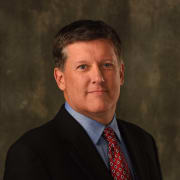After a Magnificent Open, the Case for More Links Golf

TROON, Scotland – With all due respect to those players who left Royal Troon battered and beaten by the wind and rain of the past two days, there’s not much better in this game than golf played on a links course.
The British Open, again, showed how the game does not always have to be about bashing the ball unfathomable distances and stopping it on a dime on slick, brutally fast greens.
The golf featured at Royal Troon, played along the ground with nuanced green speeds and all elements from a British summer, presented myriad challenges to the best players in the world.
Xander Schauffele handled it the best, and his 65 on Sunday without a bogey will go down as one of the game’s great final rounds. He hit 16 of 18 greens and stood up to the pressure that would have been immense enough on the easiest track let alone one of the toughest.
And it makes you wonder why we can’t have more of this type of golf.
It’s certainly not for everyone, and too much would ruin a good thing. But the best men’s players in the world play links golf perhaps two or three times a year. You’ll get debates on whether the Renaissance Club near North Berwick is a true links that is used for the Scottish Open. It’s at least close. The British Open is exclusively played on links courses in the United Kingdom (and perhaps, one day, in Ireland).
In September, the DP World Tour will play the Irish Open at Royal County Down, one of the all-time great links courses. But the tournament is not always played on a links for understandable reasons.
Still, more of what we just had over the past two weeks, please.
“It’s a completely different style of golf,’’ Schauffele said. “It makes you play shots and have different ball positions. There’s so much risk-reward when the wind’s blowing 20 miles an hour and it starts raining. There’s so many different variables that come into play. It truly is an honor to win this.
“To me, it’s big. To me winning the Scottish Open (in 2022) was big because it meant my game could travel. So to double that up and win a major in Scotland is even cooler.”
The adjustment has often proven difficult for even the best of players.
Phil Mickelson had a horrible record at the Open prior to 2004, when he missed a playoff by a shot at Royal Troon. To that point, his best finish in an Open had been a tie for 11th at the Old Course in St Andrews in 2000. And it still took him a while to really get it figured out.
Mickelson has recounted numerous times how he had to learn how to hit the ball lower and figure out different ways to chip around the greens. In 2013, he won the Scottish Open at Castle Stewart and the following week came from behind to win the Open at Muirfield. He was involved in one of the great duels with Henrik Stenson at Troon in 2016.
Tiger Woods seemed to embrace the style from the beginning. He got his first exposure in back-to-back weeks as an amateur in 1995 when he played Carnoustie for the Scottish Open followed by the Open at St Andrews. What an introduction. He won the Open three times and has a total of 10 top-10s in the tournament.
Then there is Rory McIlroy. The 2014 Open champion has seven top-10s in the event but also some flameouts, including this year’s poor showing. McIlroy admitted that he failed to adjust properly to Thursday’s different wind direction and it cost him.
And this is a player who grew up in Northern Ireland, although not playing on a traditional links course. McIlroy learned early on that to play the worldwide game as a pro, adapting to the American style, a power game with high shots, would better suit him.
“For me personally, it's probably a little harder to go back the other way because my natural game is to hit it in the air and to play more of a game that's suited to big American sort of parkland golf courses,’’ McIlroy said last week prior to the tournament. “But I've gotten much better over the years to adapting and hitting the shots that are required on links courses in blustery conditions, and I've sort of prided myself on that. My record in the Open Championship over the last few years has been very, very good.
“It still takes a little while when you play 11 months of your golf every year in very different conditions. That's why I thought it was so important for me to get back and play the Scottish Open last week, just to refamiliarize myself with the turf, the types of shots needed around the greens, and even the wind. You feel like in warmer conditions in America, like a wind that's a similar strength doesn't affect the ball as much as it just feels like a real heavy wind here, especially when you play at seaside links.
“So just getting refamiliarized with all that I think is important.
If the PGA Tour is looking to co-sanction more events with the DP World Tour, why not at a links course in the U.K.? Why not stage a signature event the week after the Open for three straight weeks of links?
The LIV Golf League ought to consider it, too. LIV has preceded the Open with tournaments on parkland courses that are nothing like a links. This week’s tournament in England is not on a links.
There are numerous logistical hurdles for all to consider but the idea sure seems intriguing.
In the meantime, enjoy some more links golf this week at Carnoustie, where the Senior Open is being played. And the AIG Women’s Open will be at St Andrews next month.
